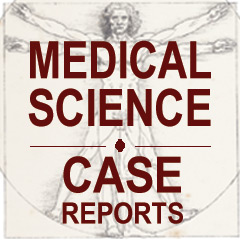Uncommon Presentation of Bickerstaff Encephalitis
Hani M. El-Fayed, Abdulaziz Ashkenani, Fady Safwat Gad
Med Sci Case Rep 2017; 4:87-89
DOI: 10.12659/MSCR.905110
Available online: 2017-08-29
Published: 2017-08-29
BACKGROUND:
Bickerstaff’s brainstem encephalitis (BBE) is an autoimmune disorder of unknown etiology, manifested by ataxia, ophthalmoplegia, and disturbance of consciousness. BBE may present with limb weakness and hyper-reflexia in addition to ophthalmoplegia and ataxia, which is considered to be overlap with GBS or its variant, Fisher.
CASE REPORT:
We describe the case of a woman who presented with right hand numbness diagnosed initially as carpal tunnel syndrome, and managed with nonsteroidal anti-inflammatory medication. One day later, she presented again with dizziness, right-sided numbness, and weakness, associated with double vision. A few day later, numbness and tingling progressed to both hands and right foot, associated with ataxic gait and hyper-reflexia.
Based on the clinical findings and results of CSF and the MRI examination, an initial diagnosis was made of Miller-Fisher variant of Guillain-Barre syndrome and, because of the hyper-reflexia, a diagnosis of Bickerstaff encephalitis with features of Miller-Fisher syndrome was made instead.
CONCLUSIONS:
Negative anti-GQ1b IgG antibody will not exclude the diagnosis of Bickerstaff encephalitis or Bickerstaff encephalitis with features of Miller-Fisher syndrome. Nerve conduction study results are normal in about one-third of patients with Guillain-Barre syndrome or its variants.
Keywords: Encephalitis, Guillain-Barre Syndrome, Miller Fisher Syndrome





